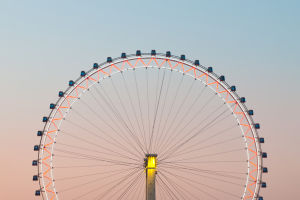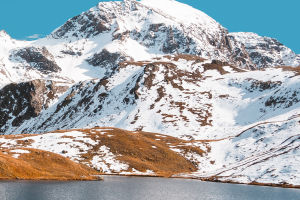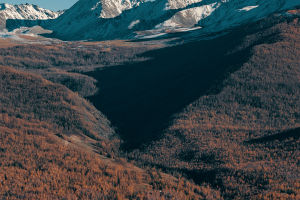The Moon, Earth's closest celestial neighbor, has captivated human imagination for centuries. Its barren, otherworldly landscapes have been a source of wonder and mystery.
But did you know that there are places on our planet that closely resemble the lunar surface?
In this article, we'll take a journey to the most moon-like locations on Earth and uncover the scientific insights and unique experiences they offer.
1. Atacama Desert, Chile
The Atacama Desert is often likened to the lunar surface due to its arid, lifeless terrain and its high-altitude plateaus. Its dryness and lack of vegetation make it one of the most extreme deserts on Earth.
2. Iceland's Highlands
Iceland's barren highlands are punctuated by volcanic craters, rugged terrain, and vast expanses of desolation. The region's geothermal activity adds to its lunar-like appearance.
3. Mauna Kea, Hawaii
The summit of Mauna Kea on the Big Island of Hawaii provides a striking lunar resemblance. The barren volcanic landscape, along with its high altitude, has made it a hotspot for astronomical observatories.
4. Cappadocia
The unique rock formations in Cappadocia, bear a striking resemblance to the lunar landscape. These distinctive "fairy chimneys" were formed through volcanic activity and erosion.
5. Namib Desert, Namibia
The vast dunes and salt pans of Namibia's Namib Desert have been compared to the surface of Mars, but their stark beauty also evokes the lunar terrain.
6. Spitsbergen, Svalbard
The Arctic tundra of Spitsbergen in the Svalbard archipelago showcases a haunting lunar quality with its barren, icy landscapes and polar desert conditions.
7. Teide National Park, Spain
The volcanic slopes of Mount Teide in Tenerife, Spain, offer a unique lunar-like experience. The absence of vegetation and the striking contrast of colors make it a mesmerizing destination.
8. Lanzarote, Canary Islands
Lanzarote, another Canary Island, exhibits a surreal lunar quality due to its volcanic soil, rock formations, and lack of vegetation.
9. The Poles of the Moon
Of course, the Moon itself holds the most moon-like landscapes. The polar regions of the Moon, with their ice deposits and extreme temperatures, offer a stark and haunting lunar beauty.
10. Scientific Value
Studying these moon-like locations on Earth has scientific significance. Researchers use these areas to test equipment, train astronauts, and conduct field studies that prepare us for lunar and planetary exploration.
11. Astrobiology and Astrogeology
Earth's moon-like regions also serve as analogs for the study of astrobiology and astrogeology. The extreme environments in these places offer insights into how life might survive on other celestial bodies.
12. Adventure and Exploration
Beyond their scientific importance, moon-like places on Earth have become popular destinations for adventure seekers and those seeking to explore unusual and mysterious landscapes.
13. Environmental Preservation
Many of these moon-like locations are fragile ecosystems. Protecting these environments is vital, not only for their unique beauty but also for the insights they provide into Earth's history and the potential for life beyond our planet.
In conclusion, the most moon-like places on Earth offer us a fascinating glimpse into what it might be like to explore our celestial neighbor. These locations provide a unique combination of scientific value, adventure, and an opportunity to experience the beauty of lunar landscapes right here on our home planet. Whether you're a space enthusiast, an adventurer, or a scientist, these moon-like locales have something intriguing to offer.


